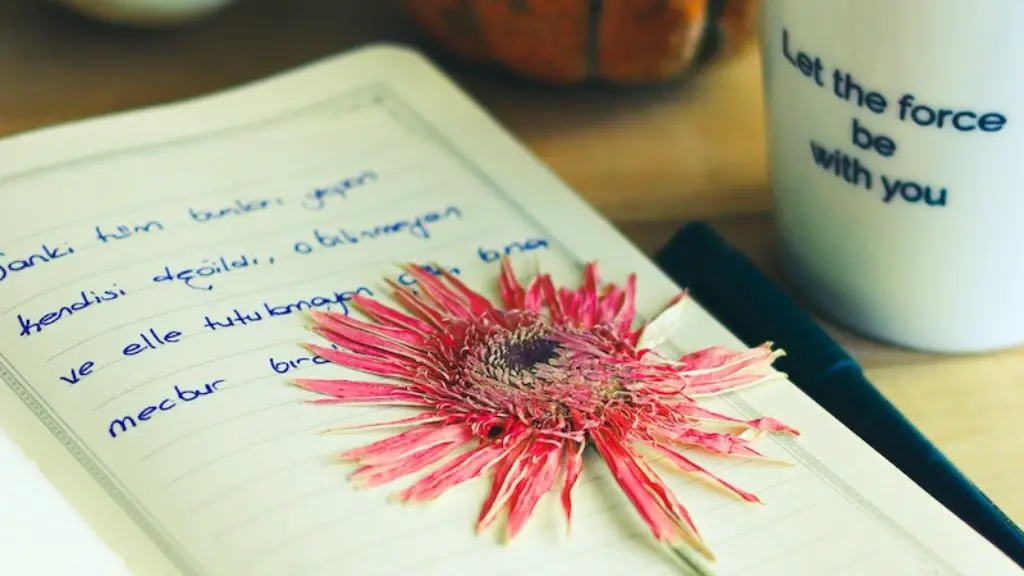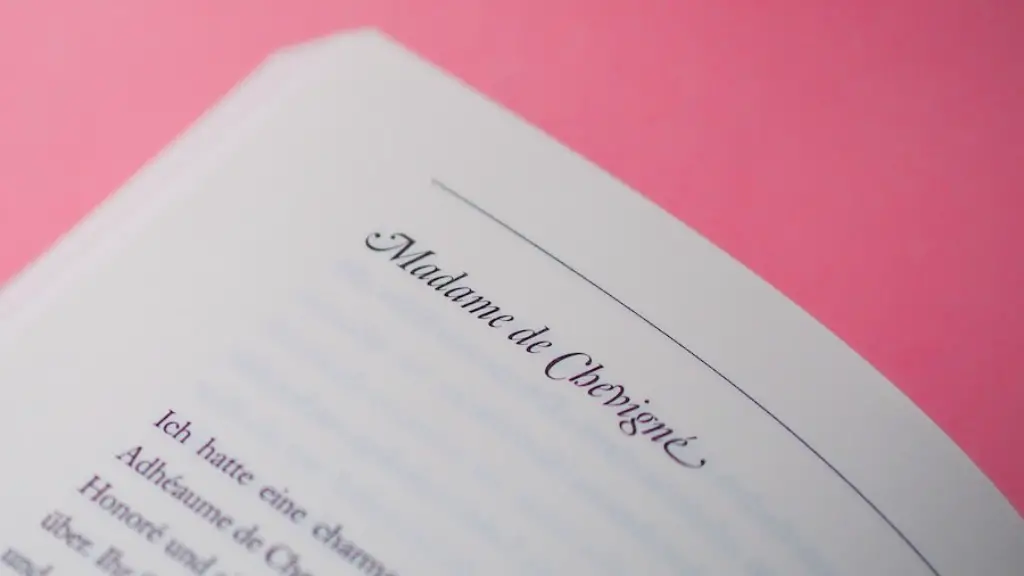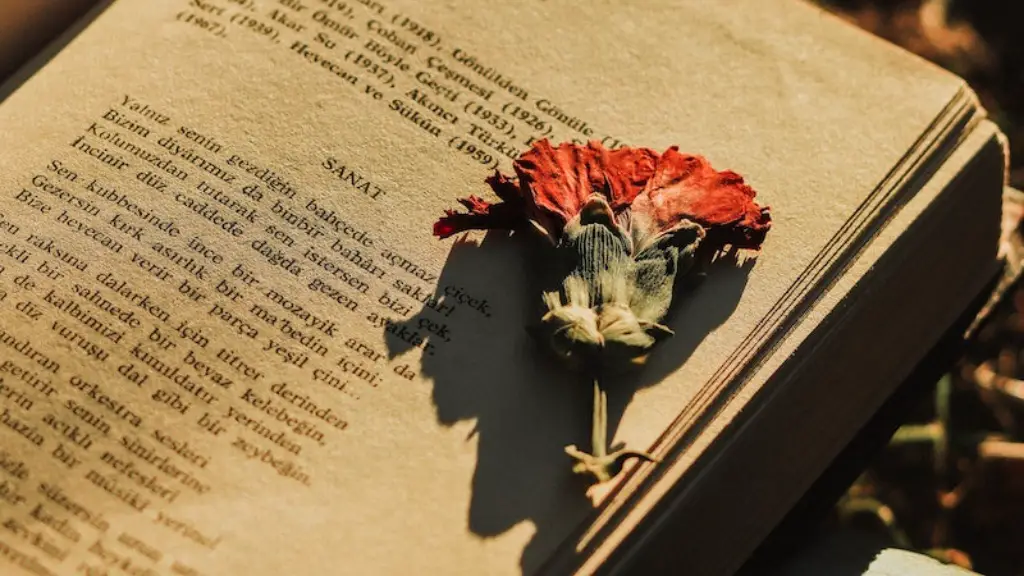What is Carpe Diem Poetry?
Carpe Diem poetry is a type of poem that uses vivid language and imagery to share an experience in a fleeting moment. It’s popular in the genre of Latin poetry, particularly the works of Horace, Catullus, and Ovid. These poems often express a profound appreciation of life by emphasizing the importance of “seizing the day” and taking advantage of time in its ever-fleeting form.
Carpe Diem literally means “seize the day” in Latin, which conveys the idea that time passes quickly and that we must make the most of each moment. The concept of carpe diem has been adapted by many literary figures, such as the British Romantic poets, Walt Whitman, and Allen Ginsberg. While carpe diem literature is often associated with a cheerful attitude towards life, many poets use it to express a sense of urgency accompanied by a longing for life’s fleeting beauty.
Carpe diem poems typically address a lamentation for the fleeting nature of life, urging readers to capture the beauty of life in any way possible. Aside from appreciating the present moment, many carpe diem poems also ask their readers to find solace in the idea of death and inevitability. This makes carpe diem literature particularly captivating as it acknowledges that life passes quickly and challenges us to accept the idea of death with the same courage and appreciation we show for life.
The writing style of carpe diem poetry is often lyrical and evocative. The language is filled with vivid imagery and metaphors to express ideas that are as commonplace as love and death. Through imagery, these poets create dreamscape filled with excitement and longing. Additionally, poets often reference mythical or historical figures and events to elevate the message beyond time and earthly limitations.
The Origin of Carpe Diem Poetry
Carpe diem literature is said to have popularly originated in Latin poetry, particularly in the works of Horace, Catullus, and Ovid in the first century B.C.E. Horace’s “Carpe diem” poems were intended to teach ethical and moral principles, particularly for young men, who were expected to make the most of life and accept death as a part of nature. His famous poem, “Be Drunk”, suggests that the best way to deal with life’s fleeting beauty is to live in the present moment with something as simple and temporary as wine. This idea of “living for the moment” inspired centuries of poetry.
Carpe diem literature has influenced famous British Romantic poets such as William Wordsworth and Samuel Taylor Coleridge. In his poem “Invitation to Eternity”, Wordsworth expressed a deep appreciation over life’s fleeting beauty and urged his readers to make the most of life. This poem was intended to express his belief in the importance of seizing the day while mourning the inevitability of death. Along with Wordsworth, the works of American Transcendentalist authors such as Walt Whitman and Allen Ginsberg evoked the idea of accepting and appreciating the fleeting nature of life.
Modern Carpe Diem Poets
Today, many poets write in a similar fashion and apply the carpe diem style of writing to their work, emphasizing the beauty and urgency of life. Chilean-born American poet, Pablo Neruda uses vivid language to address the shortness of life and tears away the walls we’ve built to prepare for death. In “Tonight I can write”, Neruda not only celebrates the beauty of life but questions our capacity to grasp its full magnitude.
American creative writing professor, Jane Hirshfield, is another contemporary admirer of carpe diem poetry. Her use of imagery and everyday language creates a dreamscape for the reader to explore. Her poem “The Garden” not only evokes the idea of appreciating one’s fleeting life but is an apology for not being able to do it better.
Similarly, Mary Oliver’s carpe diem poem, “The Summer Day”, conveys the idea of taking mental snapshots of life and taking the time to appreciate the beauty of each moment. One line from the poem states, “Tell me, what is it you plan to do with your one wild and precious life?” This poem speaks of life being like a summer day—short but meant to be savored.
Principles of Carpe Diem Poetry
Carpe diem literature conveys the idea that life is a gift, not to be taken lightly, but it’s also limited. So, in order to make the most of life, we must accept death’s inevitability and be grateful for the time we’re given. The core message in carpe diem literature is to savor each moment, to find joy in the present, and to appreciate the beauty and wonder of life while also understanding that its presence is fleeting. In short, carpe diem poetry is a compelling way to remember that seizing the day isn’t about self-indulgence. It’s about savoring the life we’ve been given and understanding that death isn’t something we should fear.
The Art of Carpe Diem Poetry
Carpe diem poetry is a distinct form of literature that is more than just words on a page. It conveys a message that can be applied to our everyday lives. Through vivid language, imagery and metaphors, carpe diem poets bring us their experiences of mortality, so that we can momentarily glimpse the reality of death and appreciate the beauty and mystery of life.
Carpe diem poetry doesn’t merely invite its readers to appreciate life; it encourages them to get out and live life the way they’d always envisioned—take risks, overcome fears and try to find solace in life’s fleeting beauty. It also asks them to seize the opportunity to express themselves. After all, if everything is so fleeting, shouldn’t we be brave enough to take risks and live by our own rules?
The Nature of Carpe Diem Poetry
The distinct nature of carpe diem poetry prompts us to see the world beyond the daily hustle. It challenges us to slow down and appreciate life, to marvel in the moment, and to welcome death when it arrives. Thus, it can be said that these poems offer an attitude of reverence towards life so that its readers are able to live without clinging and without fear.
Carpe diem poetry also asks its readers to take in the beauty of life, to see it with an open heart and to see the miracles that exist beyond the mundane. It asks us to be present and to let each moment be cherished and loved. Through its vivid language and heartfelt emotion, carpe diem poetry captivates and encourages its readers to create their own stories, to embrace life and to live it to its fullest.
The Significance of Carpe Diem Poetry
The significance of carpe diem poetry lies in its ability to transport readers to a dream-like state and to make them feel as if anything is possible. Through imagery and language, poets teach us to live for the moment, to be brave and to follow our own paths, and to make the most of life.
At its core, carpe diem literature encapsulates the idea that life is finite and that death is beyond our control. These poems invite us to embrace our mortality and show us the beauty of life through its darkness and joy. Carpe diem writers provide us with words of wisdom to remind us to emotionally connect to our present and to lead us to a better understanding of life and death.
Conclusion
Carpe diem poetry is a unique form of literature that encourages its readers to be fearless in the face of mortality and to appreciate life in its impermanence. Through vivid language, imagery, and metaphors, carpe diem poets inspire their readers to take advantage of the present moment, to seize the day and to create their own story. Carpe diem literature reminds us that life is finite and its beauty can be found in its moments of fleeting joy and sorrow.


